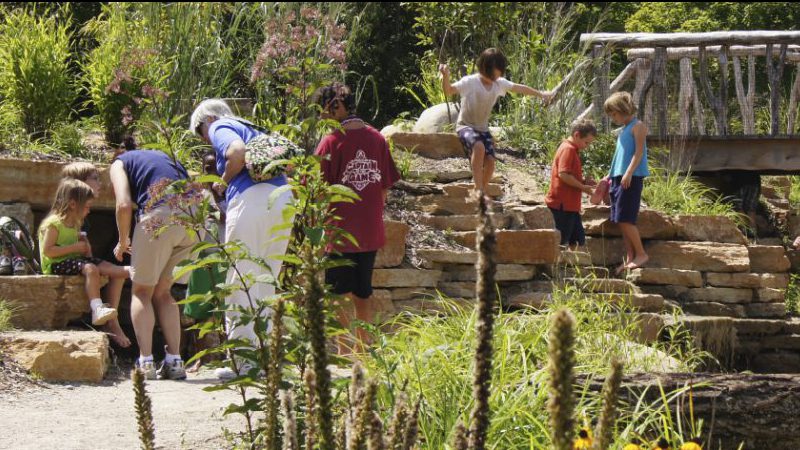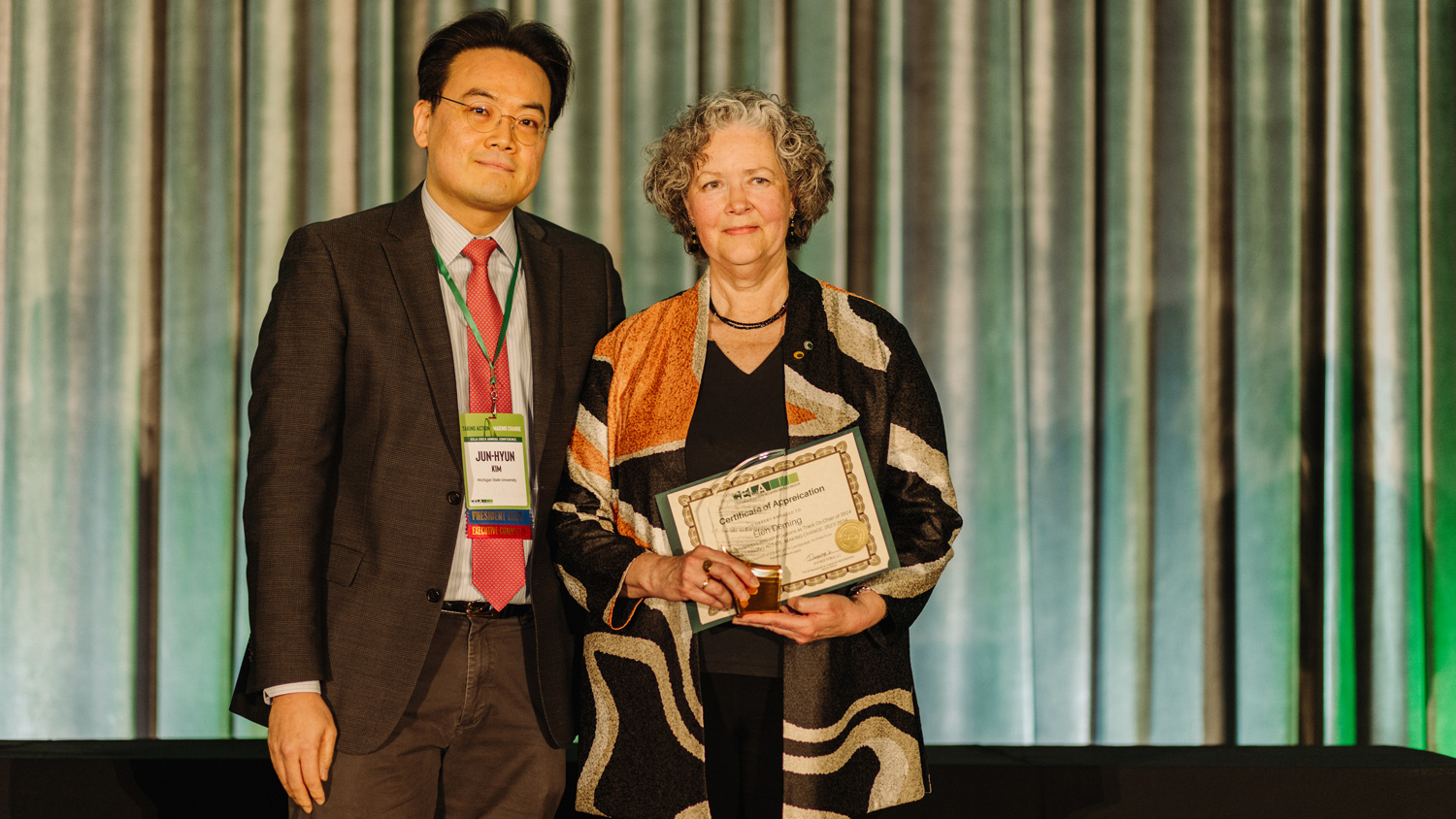The Natural Learning Initiative Celebrates 15-Years of Action Research

Designing life into the spaces used by children and families is the goal of the Natural Learning Initiative [NLI], embodied in its mission: “Creating environments for healthy human development and a healthy biosphere for generations to come.”
Professor Robin Moore had already worked in the field of children’s outdoor environments for 25 years before founding NLI with Dr. Nilda Cosco in 2000 as a research design assistance, professional development and dissemination, and research unit associated with the Department of Landscape Architecture. The NLI team is comprised of faculty members, researchers, graduate students and alumni.
The recent NLI Retrospective Exhibition: Celebrating 15 Years was held in the Brooks Hall Gallery March 3rd and presented an overview of NLI’s multi-faceted work. NLI projects to date include more than 100 sponsors with an annual average value of $650,000 over the last five years. This funding level indicates the growing interest in the field of children’s environments and underscores the potential for landscape architecture practice.
NLI supports landscape architecture professional development as seen in the Cincinnati PlayScape Initiative, launched in 2009, as a collaboration between the Cincinnati Nature Center [CNC] and the Arlitt Child and Family Research and Education Center at the University of Cincinnati [UC]. The UC Niehoff Urban Studio, with Moore and Cosco as instructors, offered a “Playscape Design” professional development program for regional landscape architects. Subsequently, two teams of program graduates successfully competed for two “Nature PlayScape” design projects sponsored by CNC [1.5 acres, opened 2011] and the Arlitt Center [.25 acre, opened 2012]. Both focused on design for nature play and learning using locally-sourced natural construction materials. Rachel Robinson Landscape Architecture collaborated with both teams. NLI served as technical advisor. UC named Moore as the signature designer for the Arlitt Nature PlayScape.
The Cincinnati PlayScape Initiative is an example of the growth of opportunities for landscape design in non-formal education institutions. Further evidence of professional opportunities in this field comes from NLI’s participation in design teams led by national firms such as Michael Van Valkenburgh and Associates [MVVA], NYC; SWA, Houston; Nelson, Byrd, Woltz Landscape Architects; and Ten Eyck Landscape Architects and Terra Design. Projects include public parks, children’s museums, and botanical gardens.
Public health issues resulting from a combination of sedentary lifestyles and poor nutrition have driven much of NLI’s work. Children from all walks of life in urban, suburban, and rural settings spend little unsupervised time outside. This lack of outdoor time contributes to North Carolina’s high rates of childhood obesity. NLI’s ongoing Preventing Obesity by Design [POD] program provides children with opportunities for gardening and free play in natural settings on a daily basis, which directly impacts their physical, social, and cognitive development.
The POD model combines NLI’s outdoor learning environment [OLE] design expertise with statewide early childhood technical assistance agencies, and policy initiatives. Using a grassroots engagement strategy and professional trainings, POD has resulted in more than fifty OLE renovations and naturalization projects in childcare centers across North Carolina. A six-part, Outdoor Learning Environment TOOLKIT published by NLI is helping to drive POD adoption across the state among a professional network of experts. They include landscape architects and designers interested in gaining community engagement skills and an understanding of NLI’s research-based approach to design for children and families.
NLI’s passion for designing life into children’s spaces has been boosted by an on-going partnership with the National Wildlife Federation [NWF], which resulted in the publication, Nature Play at Home [2013]. Another major joint project, Nature Play Learning, national guidelines for the design and management of nature play and learning areas, is currently in production supported by a grant from the US Forest Service.

Edible Schoolyard: Greensboro Children’s Museum, Downtown Greensboro, NC. Design team: Carla Delcrambe, RLA; David Swanson, RLA; Natural Learning Initiative.
Design of outdoor environmental projects for children and families invariably begins with a participatory design, process regardless of the scope of the site. Cincinnati Nature Center, Teardrop Park in Battery Park City, and the outdoor learning environment at Raleigh Nursery School, all started with the same fundamental approach. Engage the community to learn how the space will be used, set goals, and recommend design elements to achieve those goals. What follows is a natural environment integrated into the lives of children and families.
Design can help children discover the joy of following a twisting path that leads to a climbing rock in a sun filled clearing. Design can ensure accompanying adults find a restful place to sit nestled under a shade tree around the corner within eyeshot but not within “helicoptering” distance. For NLI design is the key.
NLI Publications
Outdoor Learning Environment TOOLKIT, published for Shape NC in collaboration with the NC Partnership for Children, 2013
Nature Play at Home [2012], Produced in partnership with the National Wildlife Federation.
Publications from Industry Partnership with Playcore.
Pathways for Play [http://pathwaysforplay.org], published in collaboration with American Trails Association, demonstrates how greenways and urban trails can be designed with play opportunities “along the way.”
NatureGrounds: Creating and Retrofitting Play Environments [http://naturegrounds.org] demonstrates how to integrate living landscapes with manufactured play equipment and is based on case study research conducted at Kids Together Park, Cary, NC.
- Categories:


